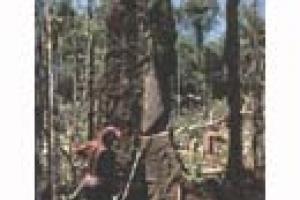Forests provide for the livelihoods of hundreds of millions of people worldwide and particularly in the tropical areas. Whatever activities are carried out that imply deforestation or forest degradation will therefore impact directly on the means of survival of those people and thus also on their health.
Colombia
Other information
14 August 2005
Thousands of indigenous peoples are displaced from their land, which is militarized and expropriated in an unending genocide. Oil exploitation is carried out – causing damages that go uncompensated – without consulting the communities and with the connivance of the government of the time. Transnational companies such as Shell, Repsol, and Maxus appropriate territorial spaces under the pretext that they are of “public utility”, they contaminate bodies of water and river beds, they deforest virgin forests and generate impacts destroying the future.
Other information
14 August 2005
The herbicide glyphosate was identified in 1974 by John Franz, a scientist working for US-based agro-industrial multinational Monsanto. Today Monsanto boasts that its glyphosate products, which include the herbicide Roundup, are "among the world's most widely used herbicides".
Glyphosate works by interfering with the metabolism of the plant and a few days after spraying, plants wilt, turn yellow and die. Glyphosate herbicides also contain chemicals which make the herbicide to stick to leaves so that the glyphosate can move from the surface of the plant into the plant's cells.
Bulletin articles
20 May 2005
The Colombia Plan has proved to be functional for oil palm economic groups (see WRM Bulletins Nos. 47 and 70). Military and para-military operations for the protection or promotion of the agro-industrial project have raided collective territories, built highways, felled forests and dug artificial canals. All this has been done in a setting of impunity and violation of Human Rights.
Bulletin articles
27 October 2004
The Nukak are a nomadic people from the Colombian Amazon, officially contacted in 1988. The present population is estimated at 390 people, distributed among 13 local groups, located in the inter-fluvial area between the Middle Guaviare and the High Inírida. Nukak as a tongue is understood by the Kakua or Bara from the Colombian Vaupes and both are classified as part of the Maku-Pinave linguistic family.
Bulletin articles
29 July 2004
It seems important to learn why for the past few years the issue of forestry in Colombia has been at the hub of the main debates and the government agenda. This article endeavours to reply to this question and to show some political elements that allow us to affirm that the issue of forestry and its environmental services are just another business, not only at national level but also at a global level.
Other information
4 April 2004
The Uitoto peoples in the Araracuara region, in the mid course of the Caqueta River show some common socio-cultural characteristics, among which a production system based on the sustainable use of three spaces: the forest, the river and the “chagra” (a clearing in the forest used for poli-culture plantation).
Bulletin articles
13 December 2003
In 1998, the author Joe Broderick finished his research on the Smurfit Carton de Colombia company, publishing his book “El imperio de cartón: impacto de una multinacional papelera en Colombia” (The Cardboard empire: the impact of a multinational paper company in Colombia). In this book he provides details of the serious social and environmental impacts caused by the activities of a branch of the Irish transnational company, Jefferson Smurfit in that country.
Other information
30 June 2003
During the late seventies Carbocol, a State coal company, revealed the existence of major coal deposits in the Guajira peninsula. The deposits were located in the territory traditionally inhabited by the Wayuu community, an indigenous nomadic people that moved along the region bordering with Venezuela. Following a long controversy on the advisability or not of exploiting this fossil fuel, the State finally gave its authorization to this company under the argument of regional development of energy.
Bulletin articles
3 December 2002
The more that is planted, the more rights that are lost. In Colombia, there are approximately 170,000 hectares of oil palm plantations. Testimonies by a delegate of the palm sector workers' organisation, connected to the Bucarelia and Las Brisas Palm Oil companies, denounce the poor working conditions in the oil palm plantations in the department of Santander, in addition to pressure and incentives to weaken the trade unions in the sector. Oleaginosas Bucarelia has 4,700 hectares and the other company some 2,800, all located at Puerto Wilches, Santander.
Other information
18 July 2002
Only available in Spanish
Publicación de Censat-Agua Viva en ocasión de la Cumbre Mundial de Johannesburgo.
Amazonía: Selva y Bosques diez años después de Río
Bulletin articles
14 June 2002
The semi-intensive production system used in shrimp farms located in the Department of Cordoba, in the Atlantic region of Colombia, has caused great disruption in the surrounding environment. Among other things, this system implies the constant dumping of large volumes of water saturated with organic waste into the estuary of the lower basin of the Sinu river.

